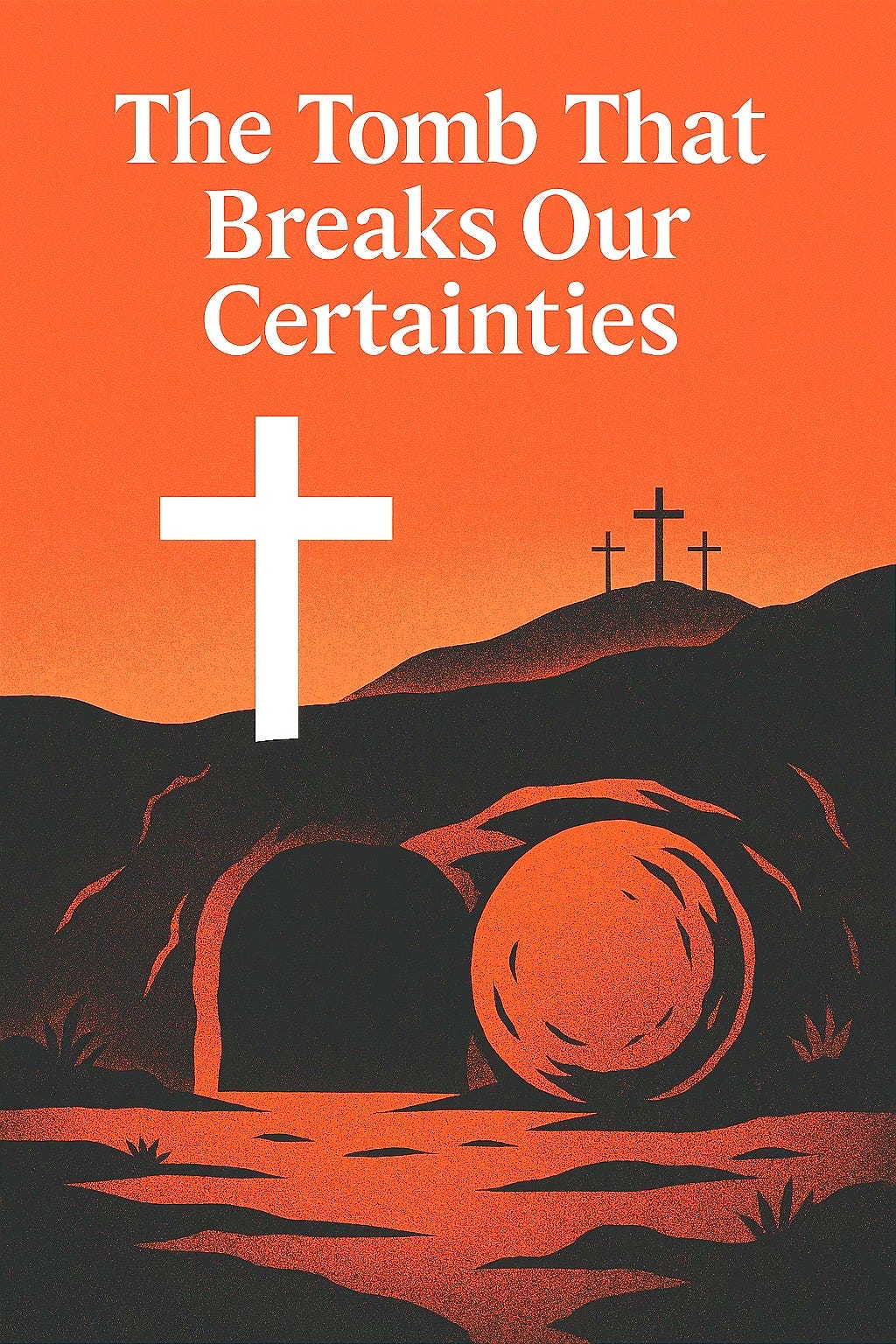The Tomb That Breaks Our Certainties
Why the Empty Grave Disrupts Consumer Faith and Challenges a World Obsessed with Control
When Mary Magdalene arrived “while it was still dark,” she carried spices, not certainty. She came expecting death—and found absence. The stone was rolled away, not for glory, but to disrupt every human assumption about power, control, and finality.
The Emptiness That Speaks Louder Than Hype
In our culture of spectacle, where megachurches compete with stadium rock shows and Instagram feeds, we crave triumphant visuals. We want bright lights, viral clips, and sound bites. Yet John’s Gospel opens on emptiness, not a loud resurrection reveal.
This emptiness isn’t a failure; it’s an invitation. It demands observation, reflection, and discomfort. Those folded linens in an abandoned tomb preach a quiet, subversive sermon: death no longer has dominion, and God refuses our prepackaged narratives.
A Faith That Outruns Both Pews and Protests
Peter and John ran into the unknown, feet pounding on cold rock. They didn’t wait for a certificate of authenticity or a policy paper on resurrection. They sprinted into mystery, just as every generation must in the face of injustice, inequality, and systemic death-dealing structures.
Resurrection faith isn’t a passive nod to piety. It’s a radical movement that:
Challenges racial and economic hierarchies that crush human dignity.
Confronts environmental destruction with hope for renewal.
Persists toward reconciliation in polarized families and divided nations.
When belief outpaces full understanding, it fuels movements that topple empire and reshape history.
Controversy in an Age of Certainty
Today’s pundits promise instant solutions with data dashboards and hashtag revolutions. Politicians demand absolute ideologies. Even many churches equate faith with consumer comfort. But the empty tomb calls us to embrace ambiguity and risk.
Saying “I believe” without a bullet-point theology enrages both the skeptic and the dogmatist. It disrupts progressives who demand certainty on every issue. It unsettles conservatives who worship neat doctrinal boundaries. Resurrection faith lives in the tension, trusting God’s action beyond our boxes.
Resurrection Clues Waiting in Your Neighborhood
The silent sermon of the tomb remains. Look for folded linens in the alleyways of your city and the corridors of your soul. Watch for grace arranged in plain sight, even where you least expect it.
Signs of silent resurrection in our world:
A neighbor you swore you’d never forgive becomes a friend.
A community dismissed as hopeless births grassroots renewal.
A tradition you abandoned reveals hidden depths of mercy.
These small wonders demand movement—your feet, your voice, your compassion.
From Empty Tomb to Everyday Courage
The disciples went home changed, though no choir followed them. They carried new faith into their kitchens, marketplaces, and councils. Their resurrection story didn’t end in a polished megachurch; it unfolded in daily acts of mercy and courage.
What stones need rolling away in your life and community? Where do you sense the dominion of death—fear of the other, apathy toward suffering, cynicism about change? Lean into the emptiness. Let it unsettle your assumptions until you must run toward grace.
Christ is not here. He is risen—and that reality is more controversial today than ever. It refuses to be domesticated by our agendas, our political tribes, or our worship styles. It calls us into a faith that outpaces understanding, disrupts systems of death, and resurrects hope in the darkest corners.
Go, and live like the stone has been rolled away. Because everything worth believing in starts with absence.
If this unsettled you, share it. Let’s run together into the mystery.





